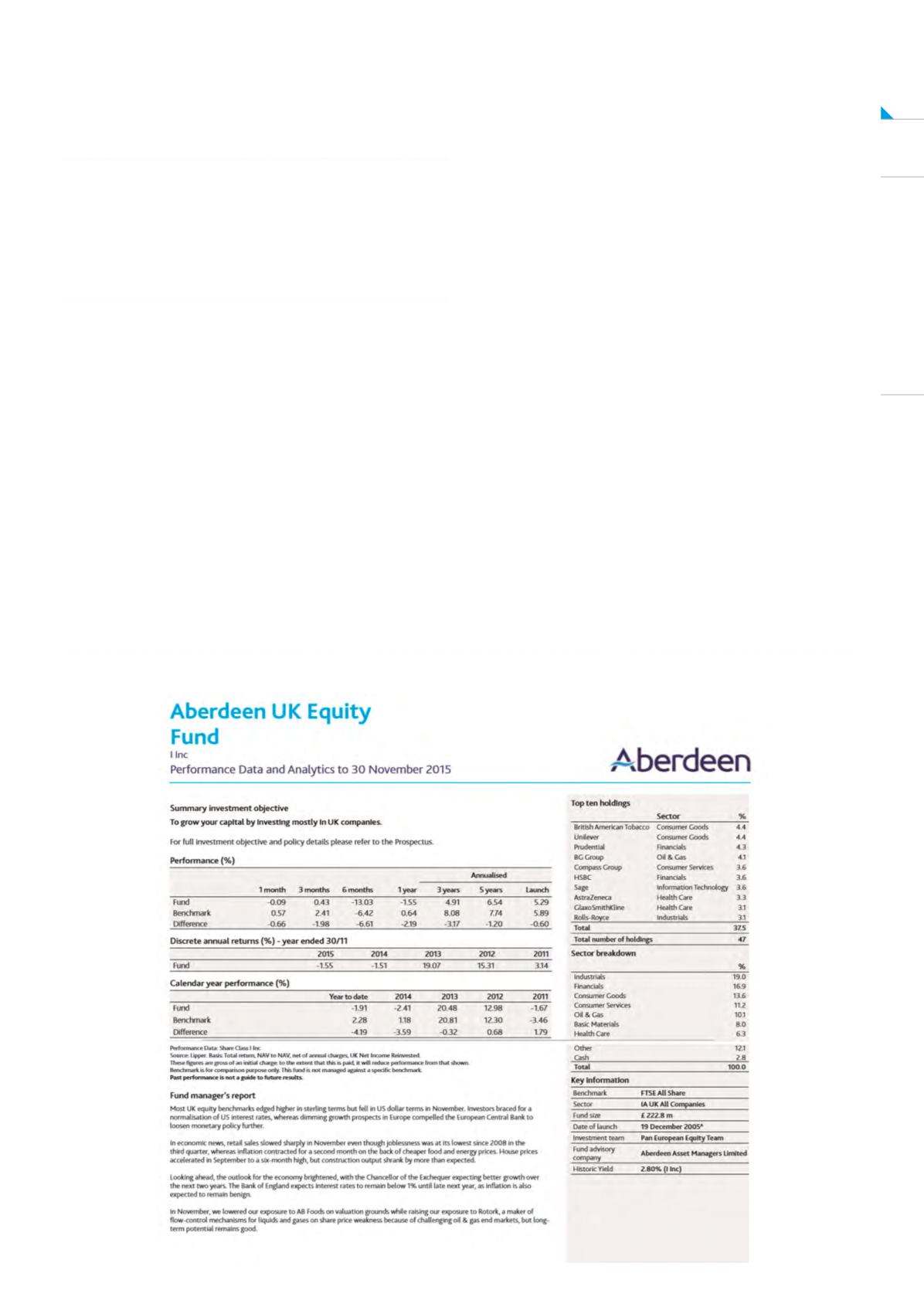
DIY Investor Magazine
/
March 2016
37
particular sector and each is ranked by industry body
the Investment Association; historical data will show
how this ranking has changed over time – whilst
past performance may be no guarantee of future
returns, it can be useful to know if the fund you are
considering is on the wax or the wane.
In addition to its fact sheet, investment trusts issue
regular, sometimes daily, updates as to the price of its
shares in comparison to its net asset values (NAV) – the
combined market value of its investments – which can
allow a would be investor to identify trusts that are
‘cheap’.
A FACT SHEET WILL ALSO SHOW HISTORICAL
PERFORMANCE DATA, USUALLY OVER ONE, THREE
AND FIVE YEARS AND THIS IS DELIVERED AS A ‘TOTAL
RETURN’ FIGURE’
Passive fund providers and platforms have selector
tools that allow the would-be investor to search for
exchange traded products to meet their individual
requirements; justETF
allows you to
search for products by asset class, geography and
strategy as well as its investment objective, total
expense ratio and its historical performance.
Many brokers publish lists of most traded products to
allow the investor to feel the mood of the market.
There are very many sources of information available
to assist the DIY investor and a little time becoming
familiar with the format of key documents and the type
of data contained therein will start to allow the investor
to make informed and objective investment decisions.
crowdfunding platforms


